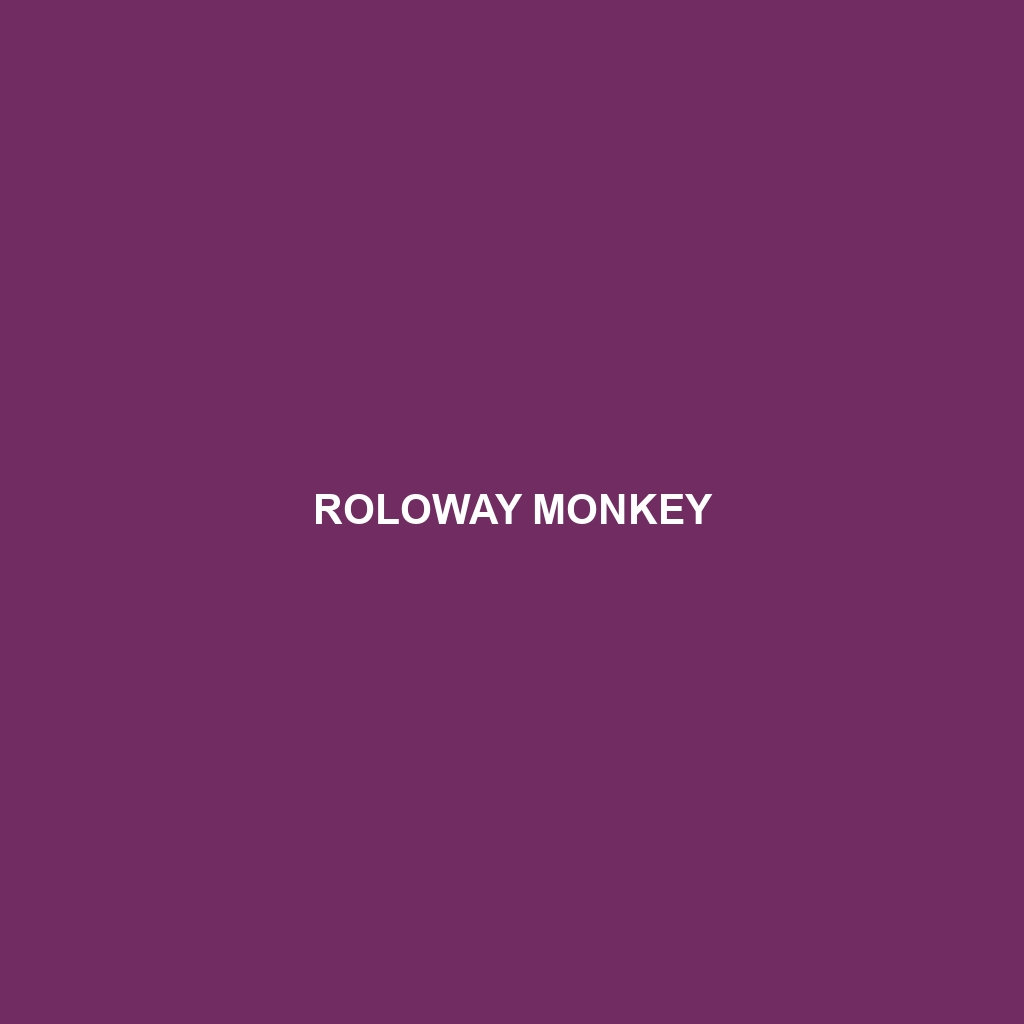Roloway Monkey: A Detailed Description
The Roloway Monkey (Cercopithecus roloway) is an endangered species of Old World monkey predominantly found in the rainforests of West Africa. Recognizable by their distinctive appearance and dynamic behavior, these monkeys play a critical role in their ecosystems but face significant threats due to habitat destruction and hunting.
Physical Characteristics
Size:
Body Length: Roloway monkeys typically measure between 40 to 55 cm (16 to 22 inches) in body length.
Tail Length: Their tails are long and can measure up to 75 cm (30 inches), aiding in balance and agility in the treetops.
Weight: Adults generally weigh between 4 to 7 kg (8.8 to 15.4 lbs).
Coloration:
Fur: Their fur is predominantly black or dark brown.
Distinctive Markings: They have a distinctive white beard and throat, contrasting sharply with their dark fur. Their rump and inner thighs are also white.
Face: The face is usually black with a narrow white band across the brow.
Special Features:
Tail: Prehensile to some extent, aiding in arboreal navigation.
Agility: Highly agile with strong limbs adapted for leaping and climbing.
Behaviors
Social Interactions:
Group Structure: Roloway monkeys live in social groups called troops, typically comprising 15 to 30 individuals. These groups are matriarchal, with females often being the backbone of the social structure.
Communication: They use a variety of vocalizations, facial expressions, and body postures to communicate with each other. Alarm calls are particularly important for warning against predators.
Feeding Habits:
Diet: Omnivorous, primarily frugivorous, but they also consume leaves, flowers, insects, and small vertebrates.
Foraging: They forage during the day (diurnal) and are mostly arboreal, rarely coming down to the ground.
Ecological Roles:
Seed Dispersers: As frugivores, they play a crucial role in seed dispersal, aiding in forest regeneration.
Prey and Predator: They are preyed upon by larger birds of prey, snakes, and mammals but also act as predators to insects and other small creatures.
Habitat and Adaptations
Primary Habitats:
Location: Found in the tropical rainforests of West Africa, primarily in Ghana and the Ivory Coast.
Environment: Prefer dense, undisturbed primary forests, but can occasionally be found in secondary forests.
Adaptations:
Arboreal Lifestyle: Adapted to a life in the trees with strong, agile limbs and a balancing tail.
Camouflage: Their coloration helps them blend into the dappled light of the forest canopy.
Conservation Status
IUCN Red List: Critically Endangered due to habitat loss, hunting, and the bushmeat trade.
Threats: Deforestation for agriculture and logging, hunting for meat and traditional medicine, and capture for the pet trade.
Fun Facts
Beard Club: The Roloway monkey belongs to a group of guenons often referred to as the “bearded monkeys” due to their impressive white facial hair.
Silent Keepers: Unlike some monkeys that are very vocal, Roloway monkeys can be surprisingly quiet, relying on subtle movements and expressions for communication.
Rare Sight: Due to their critical status, spotting a Roloway monkey in the wild is considered a rare and extraordinary event for wildlife enthusiasts and researchers.
By understanding and appreciating the unique attributes of the Roloway Monkey, efforts can be better directed towards their preservation and the protection of their natural habitats.
